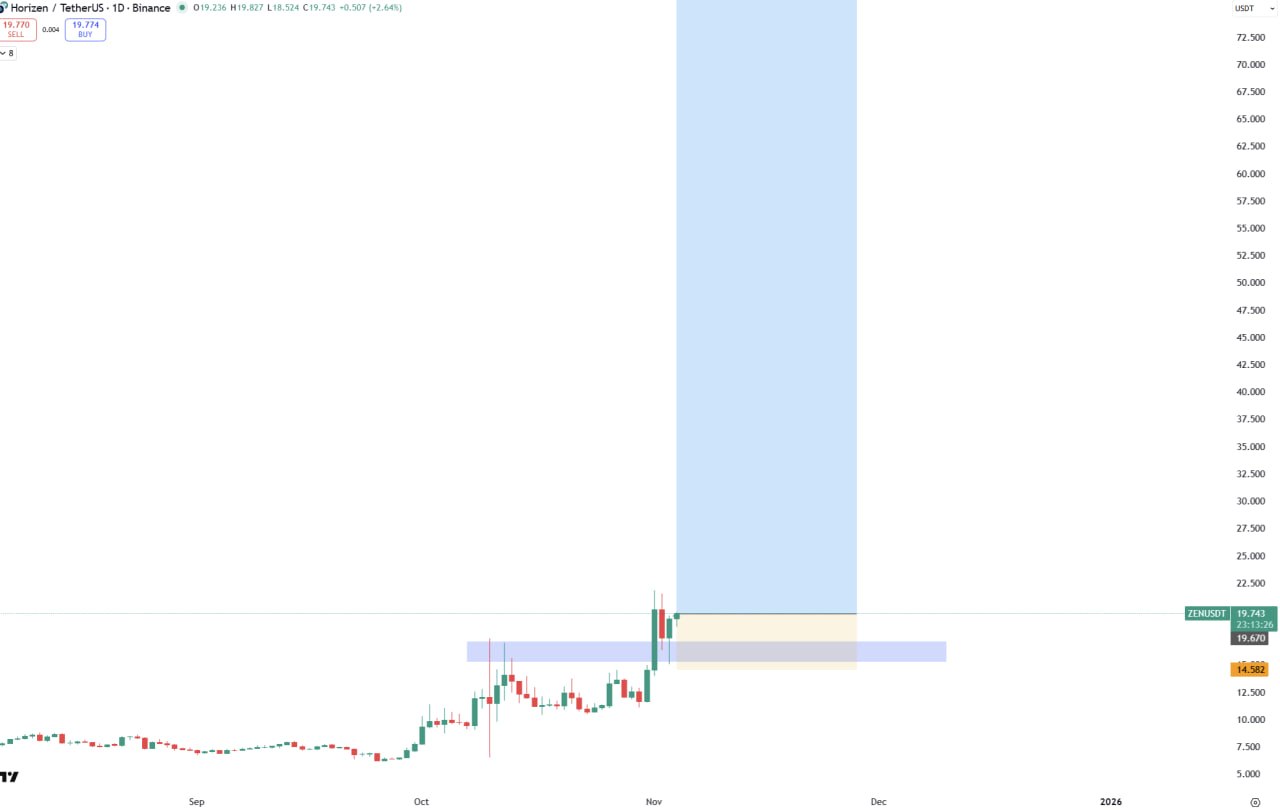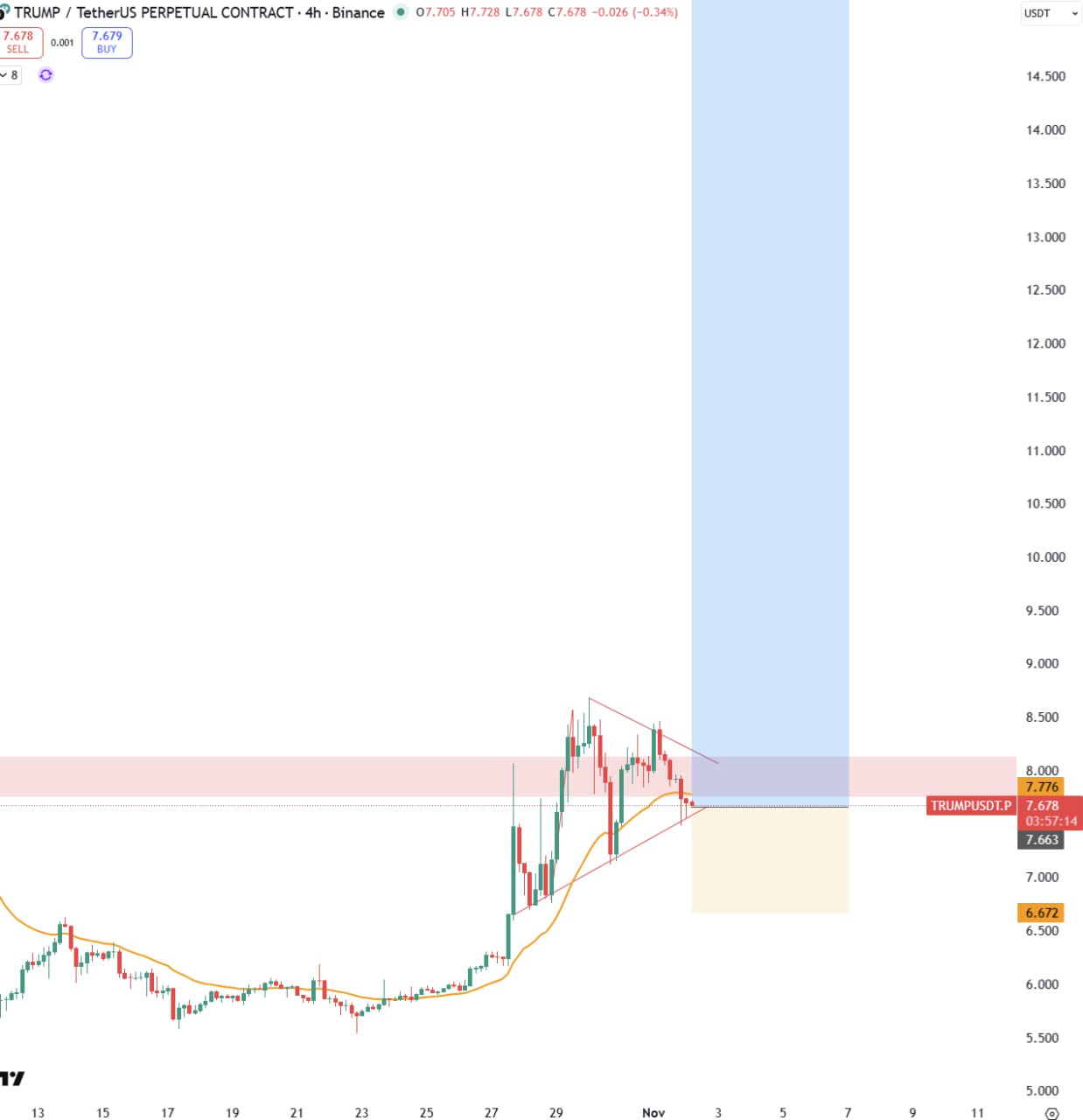XVG/USDT.P — Long
2025-11-01 22:14
Plan a long in XVG at 0.007122 with tiered targets at 0.008, 0.0085, 0.009 and a hard stop at 0.005001.

If the TradingView symbol is unavailable, use the annotated image as reference for target zones & invalidation.
XVG/USDT.P Long Trade Signal — November 1, 2025
Thesis in one sentence: Accumulate XVG near 0.007122 as it stabilizes above reclaimed support, monetize the first impulsive push into 0.008, scale profits into 0.0085 and 0.009, and respect a final invalidation at 0.005001 if the base fails.
Verge (XVG) is a classic high-beta microcap that tends to sleep for weeks, then move in compressed bursts when liquidity and attention line up. That behavior punishes late entries and rewards level discipline: you want to buy into absorbed pullbacks rather than chase green candles, let the first resistance pay you, and only then consider whether the tape deserves more leash. The parameters below are built for exactly that: a level-to-level approach that converts volatility into realized PnL without marrying a narrative.
Market Context
Across the last fortnight, breadth in altcoins has improved in fits and starts: flows rotate between large-caps (BTC, ETH, SOL) and microcaps as traders seek convexity. When majors consolidate, smaller names can catch a temporary bid, especially those with recognizable tickers and liquid perps. XVG sits squarely in that class—liquidity isn’t luxurious, but it’s adequate during active sessions, and its price tends to react quickly to incremental demand.
Two structural forces shape this setup. First, programmatic liquidity (grid systems and market-making algos) often creates predictable behavior at range edges: bids appear near prior demand, offers refresh around obvious shelves, and false breaks are common. Second, funding dynamics on perps matter more in thin names; the healthiest breakouts occur with balanced or only mildly positive funding, while euphoric spikes in funding often precede shakeouts. Our plan deliberately avoids aggressive adds into hot funding and prefers retests where spot leads and perps are orderly.
This is also a week heavy with macro headlines. Even if microcaps seem insulated, they are not: liquidity can briefly vanish during major announcements, and wick sizes expand. For that reason, we trade XVG as a tactical campaign with predefined actions rather than an open-ended bet.
Technical Analysis
Structure: On the 4H chart, XVG carved a bracket between ~0.0066 and ~0.0075. After multiple tests of the lower bound, buyers defended with higher lows, then price accepted above the mid-range zone ~0.0071–0.0072. That acceptance sets up a controlled long from 0.007122 provided pullbacks continue to hold the reclaimed shelf. The first trouble area is 0.008, which overlaps a prior breakdown level and a local volume node; beyond that, 0.0085 aligns with a dense supply pocket, while 0.009 sits just beneath a round-number magnet that frequently attracts late chasers.
- Trend: Micro uptrend on 1H/4H (higher lows, higher highs), with the daily still in a broad range.
- Momentum: RSI/MACD (if you use them) show momentum building out of compression; more important is price acceptance above the retest shelf rather than oscillator crossovers.
- Volume: Expansion on pushes up, tapering during pullbacks—healthy rotation signature. Expect a volume swell if 0.008 gives way.
- Anchored VWAP: An aVWAP from the most recent local low sits below current price; that’s constructive as long as pullbacks respect it.
- Liquidity: Spreads tighten during U.S./EU hours, widen significantly in off-hours. Slippage risk is real on market orders.
Key Levels
- Entry: 0.007122 (tolerance: 0.00706–0.00718 for limit fills)
- Targets: 0.008 → 0.0085 → 0.009
- Stoploss: 0.005001 (beneath base failure; if tagged, thesis invalid)
- Support: 0.0069–0.0070 (retest shelf), 0.0066 (base low)
- Resistance: 0.0080–0.0081 (local shelf), 0.00845–0.0086 (supply pocket), 0.009–0.0092 (round-number zone)
Execution Blueprint
- Trigger condition: Wait for a 1H close back above ~0.0071 after a dip; avoid chasing breakouts through 0.008 on first touch.
- Initial partial: Take 25–35% off into 0.008. This is not about top-ticking—it's about derisking while the path is narrow.
- Progression: If price accepts above 0.008 on rising volume, advance the stop to just under the most recent 1H higher low (~0.0076–0.0077). Scale another 25–35% at 0.0085.
- Runner: Keep a small remainder for 0.009. Trail beneath 1H/4H higher lows to let trend do the work without gifting back profits.
Failure Signatures
Two 1H closes below 0.0069 with negative delta and rising open interest (fresh shorts) implies distribution; step aside before the hard stop. A daily close under 0.0066 resets the chart and neutralizes the idea until a new base forms.
Risk Management
XVG is a thin, reactive instrument. Respect that. Keep size small enough that the distance to stop does not exceed your per-trade risk budget. Adopt an OCO (one-cancels-the-other) approach: entry with bracketed stop and profit targets so you are not forced into impulsive decisions mid-candle. After TP1, you can lift the stop above entry if structure is clean, but beware placing arbitrary breakeven stops that sit exactly where algos sweep liquidity.
- No averaging down below invalidation. If the stop is hit, thesis is wrong—reset.
- Prefer limit orders near levels; market orders in air pockets often fill far worse than expected.
- Set a daily drawdown cap (e.g., −2R). If you hit it, pause. Your edge erodes rapidly under stress.
- Keep leverage modest. Position so exchange liquidation sits far below the hard stop.
For education only. Perpetual futures are risky. Losses can exceed expectations, especially in instruments with thin liquidity. You are responsible for your sizing and execution.








